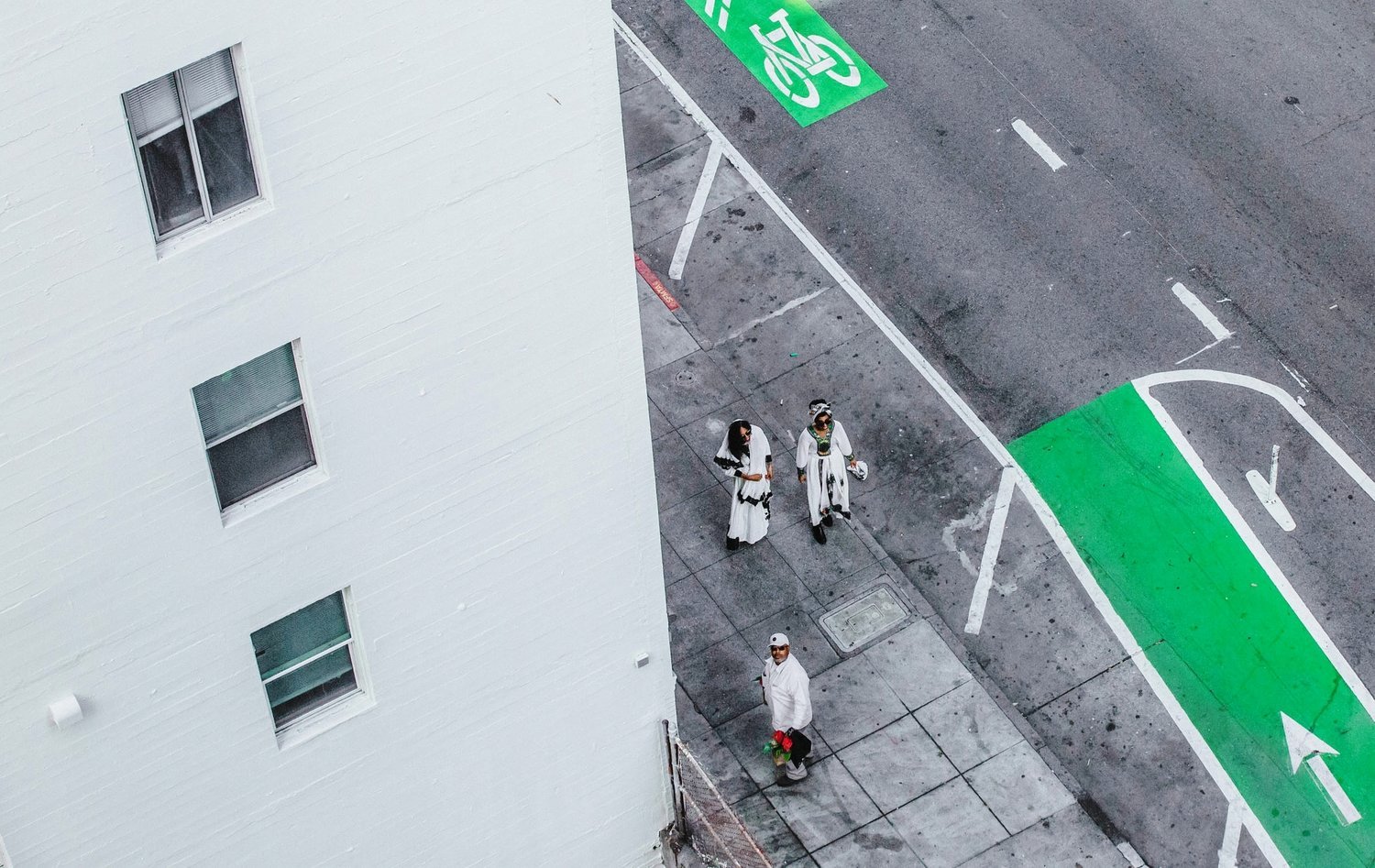The New York Times: Is There Racism in the Deed to Your Home?
Racial covenants were designed to keep neighborhoods segregated. Some states are now making it easier to erase them from legal documents.
Last year, to celebrate the centennial of their charming Craftsman home, Kyona and Kenneth Zak repainted it in historically accurate colors — gray, bronze green and copper red. They commissioned beveled-glass windows to complement the original stained glass. And they visited the San Diego County Recorder, to have a line drawn through a sentence in their deed that once would have prohibited Ms. Zak, who is Black, from owning the home.
Read the full article here.
The Photographic Journal: Same, but Different
“Same, but Different” was my first photo essay published with The Photographic Journal. I styled two models in a similar color palette, but photographed them separately. Not even on the same day. We went to the same locations, and without telling the models how to pose, I documented how they interacted with the same space. This photo essay explores the concept of things being the same, but different.
View full editorial here.
The Photographic Journal: An Afternoon with the Sun
Creating art during a pandemic feels rebellious. Even joy feels rebellious with so much sadness surrounding us, and now a year in, finding new ways of living is uncomfortable, but I do it anyway. Like most artists, I am addicted to the idea of story, so it feels too simplistic to say this editorial was sublime, but it was.
View full editorial here.
The Photographic Journal: Dark
Photographed in Times Square and a subway station off 47th Street, this fashion editorial plays on the mystery of the woman and the vibrancy of New York. A story of curiosity, power, and flirtation. The model, Anika Stewart, drew inspiration from the 1970s in her hair, makeup and wardrobe styling. During this time Times Square was regarded as gritty, dark and desperate. Though everything dark isn’t ugly, and with grit one can see details. Often isolated against bright buildings and string lights, Anika shows an optimistic revision of Times Square: dark skin against a dark sky, but much light, life, and lust.
View full editorial here.
The Photographic Journal: A Sunken Place
“A Sunken Place” is a very personal photo essay for The Photographic Journal featuring model Khadijat Dania in an alternate reality — where it feels like home, but it’s not quite right. After receiving feedback to diversify my subjects, I was inspired to photograph this editorial.
View full editorial here.
The Eames Institute: What’s an Institute for Anyway?
The Eames Institute of Infinite Curiosity is a cultural organization dedicated to exploring how design can solve real-world problems. Rooted in the legacy of Charles and Ray Eames, the Institute showcases their work, process, and philosophy through exhibitions, editorial content, and public programming. It emphasizes curiosity, experimentation, and the belief that good design is for everyone. The goal is not just to preserve history, but to inspire new ways of thinking and creating today.
Read more here.
SF Weekly: The Shoots
In collaboration with filmmaker Sephora Woldu, “The Shoots” was an exhibit on the making of her film, “Life is Fare.” Woldu’s film explores Eritrean culture set against a changing San Francisco landscape. To promote her Indie film, I photographed Woldu and her sister throughout San Francisco’s Tenderloin to capture not only the essence of her film, but also the character of the neighborhood.
Read more here.
Wine Enthusiast: The Sonoma Winemakers Devoted to ‘Complete Control and a Sense of Place’
The French word for a monopoly, monopole, refers to a vineyard site from which one producer sources grapes exclusively, a place where no one else has access to make wine.
These aren’t common in California. Given its relative youth vis-à-vis other renowned growing regions of the world, Sonoma is not a place where it’s typical for generations of one family to own a piece of land over centuries and continuously plant and farm it to wine grapes.
Read more here.











